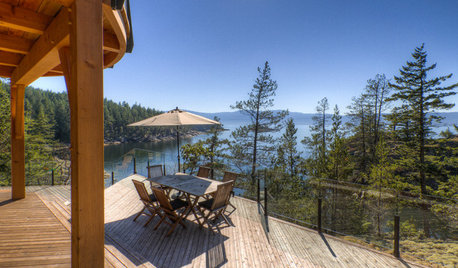Basic Outline to Follow for Organic Lawn Care
claga
9 years ago
Related Stories

GARDENING GUIDESHow to Prep Your Ground for a Healthy New Lawn
Seed or sod that falls on weedy, lumpy soil is a wasted effort. Follow these steps to ensure that your new lawn will thrive
Full Story
ORGANIZING6 Ways to Care for Your Washing Machine
Keep your laundry room and clothes in great shape with these basic washing machine tips
Full Story
MOST POPULARCustom Closets: 7 Design Rules to Follow
Have room for a walk-in closet? Lucky you. Here’s how you and your designer can make it the storage area of your dreams
Full Story
ARCHITECTUREDesign Practice: The Basics of Marketing Your Business
Pro to pro: Attract clients and get paying work by drawing attention to your brand in the right places
Full Story
GARDENING GUIDESHow to Keep Your Trees Healthy
Ensure your trees’ vigor for years to come with these tips for protecting roots, watering effectively and more
Full Story
COMMUNITYWant a Cleaner, Safer Neighborhood? Show You Care
Our behavior strongly influences others, says a new study. Show neighbors you care about your street and watch them follow suit
Full Story
LANDSCAPE DESIGN15 Great Ideas for a Lawn-Free Yard
End the turf war for good with hardscaping, native grasses and ground covers that save water and are easier to maintain
Full Story
FRONT YARD IDEASBefore and After: Front Lawn to Prairie Garden
How they did it: Homeowners create a plan, stick to it and keep the neighbors (and wildlife) in mind
Full Story
MATERIALSInsulation Basics: What to Know About Spray Foam
Learn what exactly spray foam is, the pros and cons of using it and why you shouldn’t mess around with installation
Full Story
DECKSDecking Materials Beyond Basic Lumber
Learn about softwoods, tropical hardwoods, composites and more for decks, including pros, cons and costs
Full Story






danielj_2009
morpheuspa (6B/7A, E. PA)
Related Professionals
Fillmore Landscape Architects & Landscape Designers · Allentown Landscape Contractors · Allentown Landscape Contractors · Azalea Park Landscape Contractors · Bell Gardens Landscape Contractors · College Park Landscape Contractors · Dinuba Landscape Contractors · Fairview Landscape Contractors · Fort Myers Landscape Contractors · Maywood Landscape Contractors · Melrose Landscape Contractors · Royal Oak Landscape Contractors · Tustin Landscape Contractors · Montclair Swimming Pool Builders · Redlands Swimming Pool BuildersclagaOriginal Author
clagaOriginal Author
clagaOriginal Author
clagaOriginal Author
clagaOriginal Author
dchall_san_antonio
clagaOriginal Author
danielj_2009
clagaOriginal Author
danielj_2009
clagaOriginal Author
morpheuspa (6B/7A, E. PA)
clagaOriginal Author
morpheuspa (6B/7A, E. PA)
clagaOriginal Author
morpheuspa (6B/7A, E. PA)
clagaOriginal Author
BoatDrinksq5
morpheuspa (6B/7A, E. PA)
BoatDrinksq5
davidrt28 (zone 7)
morpheuspa (6B/7A, E. PA)
morpheuspa (6B/7A, E. PA)
clagaOriginal Author
morpheuspa (6B/7A, E. PA)
maplerbirch
danielj_2009
dchall_san_antonio
sc77 (6b MA)
clagaOriginal Author
morpheuspa (6B/7A, E. PA)
sc77 (6b MA)
sc77 (6b MA)
morpheuspa (6B/7A, E. PA)
sc77 (6b MA)
dchall_san_antonio
morpheuspa (6B/7A, E. PA)
clagaOriginal Author